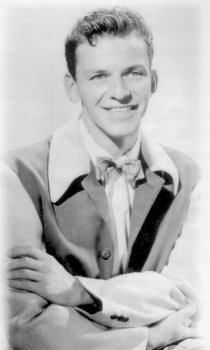 |
 Stranger in the Night:
Stranger in the Night:
The Story of Sinatra and Hoboken and What Went Wrong
By Anthony De Palma, Jr.
Ask the Old-Timers
I grew up in Hoboken when people still pronounced Hoboken with a heavy accent on the first two syllables. It wasn't an attractive, closely knit urban community then. It was a city, a dirty city, crowded with old tenements, where the asphalt got so hot in the summer that you could push in bottle caps with your foot. None of us considered Hoboken a great place, nor did we think it a particularly bad place. It was just Hoboken. Nothing special.
There were only a few exceptions to the grinding routine of living, working, and dying in Hoboken. My father, who was born there, used to tell us stories about two extraordinary events, which proved he had captured a bit of history for himself and for all of us.
One was the making of On the Waterfront. The other story involved Frank Sinatra, and how he used to come by "Cockeyed Henny's," the local poolroom my father hung around as a kid. He'd tell us how Sinatra, just a skinny teenager then, pestered the older guys so much with his singing and ukulele playing that they would throw him out.
Every other family in Hoboken had similar tales. Local barbers became unofficial historians, swapping stories and taping faded black and white photographs to the mirror walls of their shops. The pictures were always the same: a studio mug shot of Sinatra, signed "Sincerely, F.S."
The Sinatra stories were difficult to substantiate, especially back then, because Sinatra went around telling people he was from Hasbrouck Heights, where he had bought a house after leaving Hoboken. The only proof of Sinatra's real home came from the barber shops and the old-timers, but all they said was that "Sinatra is a bum," or that he still owed them twenty-five dollars. The city showed no public recognition that Sinatra had once lived there. When his father retired from the fire department in 1956, and moved to Weehawken, he became the last Sinatra to leave the city.


|
|
 |